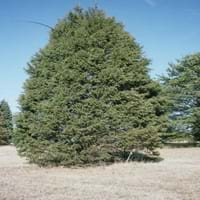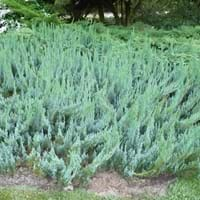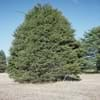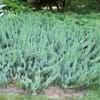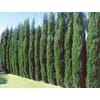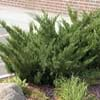Life Span
Perennial
Perennial
Type
Needled or Scaled Evergreen
Needled or Scaled Evergreen
Origin
Southwestern United States
North America
Types
Bhutan cypress, Tonkin cypress, Vietnamese cypress
Bar Harbour, Andorra Compacta, Blue Forest, Blue Chip, Douglasii, Blue Rug, Glauca, Gold Carpet, Icee Blue, Gold Carpet, J.J. Hughes, Marcellus
Number of Varieties
Not Available
Habitat
Woodland Garden Canopy
Fields, Pastures, Upland soils
USDA Hardiness Zone
6-9
4-9
Sunset Zone
7, 8, 9, 10, 11, 12, 13, 14, 15, 16, 17, 18, 19, 20, 21, 22, 23, 24
A1, A2, A3, H1, H2, 1a, 1b, 2a, 2b, 3a, 3b, 4, 5, 6, 7, 8, 9, 10, 11, 12, 13, 14, 15, 16, 17, 18, 19, 20, 21, 22, 23, 24
Habit
Pyramidal
Mat-forming
Flower Color
Yellow
Pink, White
Flower Color Modifier
Bicolor
Bicolor
Fruit Color
Brown
Gray, Purple
Leaf Color in Spring
Green, Gray Green
Light Green, Blue Green, Olive, Gray Green, Dark Green, Yellow green
Leaf Color in Summer
Green, Gray Green
Light Green, Blue Green, Olive, Gray Green, Dark Green, Yellow green
Leaf Color in Fall
Green, Gray Green
Light Green, Blue Green, Olive, Gray Green, Dark Green, Yellow green
Leaf Color in Winter
Green, Gray Green
Purple, Light Green, Blue Green, Olive, Gray Green, Dark Green, Yellow green
Leaf Shape
Fern like
Scale-like imbricate
Plant Season
Spring, Summer, Fall, Winter
Spring, Summer, Fall, Winter
Sunlight
Full Sun, Partial Sun
Full Sun, Partial Sun, Partial shade, Full Shade
Growth Rate
Medium
Medium
Type of Soil
Loam, Sand
Loam, Sand
The pH of Soil
Acidic, Neutral
Acidic, Neutral, Alkaline
Soil Drainage
Well drained
Average
Bloom Time
Not Available
Not Available
Tolerances
Drought
Drought
Where to Plant?
Ground
Container, Ground
How to Plant?
Seedlings
Hardwood Cuttings, Semi-hardwood cuttings, Softwood cuttings, Stem Cutting
Plant Maintenance
Medium
Medium
Watering Requirements
Drought Tolerant
Average Water Needs, Do Not over Water, Requires regular watering
In Summer
Lots of watering
Lots of watering
In Spring
Moderate
Moderate
In Winter
Average Water
Average Water
Soil pH
Acidic, Neutral
Acidic, Neutral, Alkaline
Soil Type
Loam, Sand
Loam, Sand
Soil Drainage Capacity
Well drained
Average
Sun Exposure
Full Sun, Partial Sun
Full Sun, Partial Sun, Partial shade, Full Shade
Pruning
Remove damaged leaves, Remove dead branches, Remove dead leaves, Remove dead or diseased plant parts, Remove deadheads
Remove damaged leaves, Remove dead branches, Remove dead leaves
Fertilizers
All-Purpose Liquid Fertilizer
All-Purpose Liquid Fertilizer
Pests and Diseases
Red blotch
Tip blight, Twig blight
Plant Tolerance
Drought
Drought
Flower Petal Number
Single
Single
Fragrant Bark/Stem
Yes
No
Foliage Texture
Fine
Medium
Foliage Sheen
Matte
Matte
Attracts
Wildlife
Butterflies, Hummingbirds, Wildlife
Allergy
allergic reaction, Avoid during Pregnancy
Not Available
Aesthetic Uses
Showy Purposes
Decorating walls, Ground Cover, slopes
Beauty Benefits
Good for skin
Not Available
Edible Uses
Insignificant
Yes
Environmental Uses
Air purification, soil stabilisation
Air purification
Medicinal Uses
Not Available
Diaphoretic, Febrifuge, Kidney problems
Part of Plant Used
Wood
Leaves
Other Uses
Used as fuel, Used for woodware
Incense
Used As Indoor Plant
Yes
No
Used As Outdoor Plant
Yes
Yes
Garden Design
Feature Plant, Mixed Border, Screening, Wind Break
Container, Edging, Groundcover, Topiary, Bonsai, Espalier
Botanical Name
CUPRESSUS arizonica
JUNIPERUS horizontalis
Common Name
Arizona cypress
Creeping Juniper, Horizontal Juniper
In Hindi
Arizona Cypress Tree
Creeping Juniper
In German
Arizona Zypresse
Kriech-Wacholder
In French
Arizona Cyprès
Genévrier rampant
In Spanish
Ciprés de Arizona
Creeping Juniper
In Greek
Αριζόνα Κυπαρίσσι
Creeping Juniper
In Portuguese
Árvore de Cypress Arizona
Creeping Juniper
In Polish
Arizona Cypress Drzewo
Jałowiec płożący
In Latin
Cupressus arbor
Creeping Juniper
Phylum
Pinophyta
Coniferophyta
Class
Pinopsida
Pinopsida
Family
Cupressaceae
Cupressaceae
Genus
Cupressus
Juniperus
Clade
Not Available
Not Available
Tribe
Not Available
Not Available
Subfamily
Cupressoideae
Not Available
Number of Species
Not Available
Not Available
Importance of Arizona Cypress and Creeping Juniper
Want to have the most appropriate plant for your garden? You might want to know the importance of Arizona Cypress and Creeping Juniper. Basically, these two plants vary in many aspects. Compare Arizona Cypress and Creeping Juniper as they differ in many characteristics such as their life, care, benefits, facts, etc. Every gardener must at least have the slightest clue about the plants he wants to plant in his garden. Compare their benefits, which differ in many ways like facts and uses. The medicinal use of Arizona Cypress is Not Available whereas of Creeping Juniper is Diaphoretic, Febrifuge and Kidney problems. Arizona Cypress has beauty benefits as follows: Good for skin while Creeping Juniper has beauty benefits as follows: Good for skin.
Compare Facts of Arizona Cypress vs Creeping Juniper
How to choose the best garden plant for your garden depending upon its facts? Here garden plant comparison will help you to solve this query. Compare the facts of Arizona Cypress vs Creeping Juniper and know which one to choose. As garden plants have benefits and other uses, allergy is also a major drawback of plants for some people. Allergic reactions of Arizona Cypress are allergic reaction and Avoid during Pregnancy whereas of Creeping Juniper have Not Available respectively. Having a fruit bearing plant in your garden can be a plus point of your garden. Arizona Cypress has no showy fruits and Creeping Juniper has no showy fruits. Also Arizona Cypress is not flowering and Creeping Juniper is not flowering . You can compare Arizona Cypress and Creeping Juniper facts and facts of other plants too.
